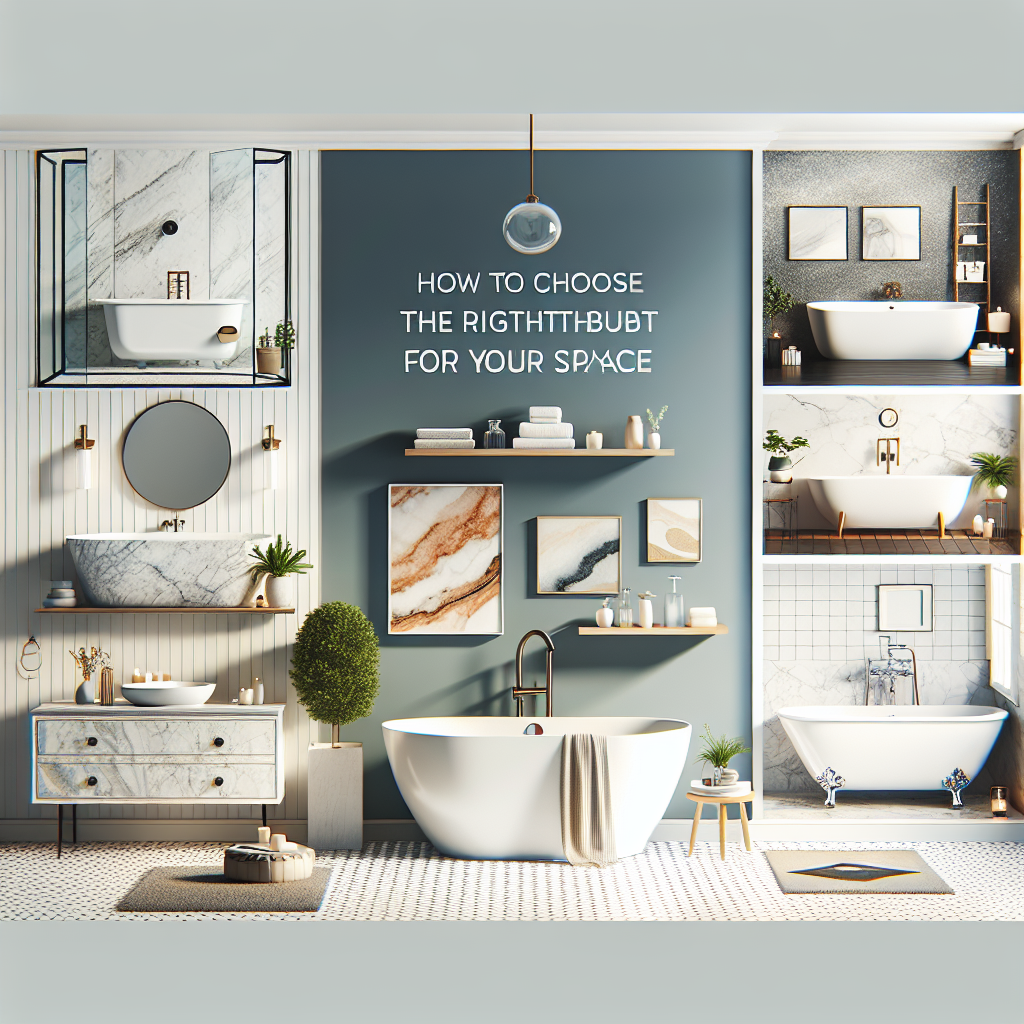Choosing the right bathtub is one of the most impactful decisions you’ll make when designing or renovating your bathroom. With so many shapes, sizes, and materials to consider, it can be overwhelming. Whether you’re a first-time homebuyer or looking to upgrade your existing tub, this guide will help you navigate through the options to find the perfect fit for your space and lifestyle.
Assess Your Space
Measure Your Bathroom
Before you dive into bathtub options, take the time to measure your bathroom. Knowing the dimensions of your space will help you narrow down your choices. A good rule of thumb is to leave at least 24 inches of walking space around the tub for easy access.
Consider the Layout
Evaluate the current layout of your bathroom. Is there room for a freestanding tub, or are you limited by built-in fixtures? If you’re working with a smaller bathroom, you might want to opt for a compact model, while a larger space may allow for more extravagant designs.
Understand the Different Types of Bathtubs
Freestanding Bathtubs
Freestanding bathtubs have become increasingly popular due to their elegant design and versatility. They stand alone and can be placed anywhere in the bathroom, serving as a focal point. These tubs can come in various shapes, from modern geometric styles to classic clawfoot designs, making them perfect for all tastes.
Alcove Bathtubs
Alcove bathtubs are the most common type, fitting snugly between three walls. They are ideal for saving space without sacrificing comfort. If you enjoy long, relaxing baths, look for a wider alcove model that can comfortably accommodate you.
Drop-In Bathtubs
A drop-in bathtub is designed to be dropped into a pre-built frame or deck. This type of tub allows for creative design elements, such as custom tiles around the tub. Drop-in bathtubs offer flexibility in shape and depth, making them a solid choice for those looking to create a luxurious spa vibe.
Corner Bathtubs
For those with limited space, corner bathtubs can be a game-changer. They effectively utilize corners, maximizing your bathroom’s footprint while offering a unique aesthetic. These tubs typically have a rounded or triangular shape and can serve as a stylish and space-efficient option.
Choose the Right Material
Acrylic
Acrylic bathtubs are lightweight, durable, and come in a wide range of styles. They are easy to clean and maintain, making them perfect for busy households. Plus, acrylic tubs are available in various colors and finishes, allowing for customization to fit your design.
Cast Iron
For a classic and durable option, consider a cast iron bathtub. Known for their strength and heat retention, these tubs offer a warm bathing experience. However, they are heavy and require additional support, making installation more complex.
Fiberglass
Fiberglass bathtubs are an economical and lightweight choice. While they may not be as durable as acrylic or cast iron, they come in many styles and colors. Fiberglass tubs are easy to install, making them suitable for DIY projects.
Consider Your Budget
Bathtubs come in a wide range of prices, so it’s essential to set a budget before you start shopping. While it might be tempting to choose the least expensive option, consider the long-term value and durability of your purchase. Quality tubs may cost more upfront but can save you money on repairs and replacements down the line.
Factor in Style and Comfort
Choose a Design That Complements Your Bathroom
The bathtub should harmonize with the overall theme and décor of your bathroom. From sleek modern lines to ornate vintage styles, the right tub can enhance the aesthetic of your space. Additionally, consider the color and finish—neutral tones tend to be timeless, while bolder colors can make a statement.
Prioritize Comfort Features
Don’t forget to think about comfort! Look for features that will enhance your bathing experience, such as ergonomic designs, headrests, and armrests. If you enjoy soaking for extended periods, a deeper tub might be more suited to your needs.
Installation and Maintenance Considerations
Professional vs. DIY Installation
Be realistic about installation. Some bathtubs can be installed easily, while others require professional help, particularly if plumbing needs to be rerouted or reinforced. Assess your skill level to determine if this is a DIY project, or if it’s best left to the pros.
Maintenance Needs
Finally, consider the upkeep required for your chosen material. Acrylic and fiberglass are generally easier to maintain than cast iron or porcelain-enameled tubs, which may require more care to prevent chipping or scratching. Choose a material that matches your lifestyle and willingness to care for it.
Conclusion
Choosing the right bathtub for your space involves careful consideration of size, style, material, and budget. By assessing your bathroom, understanding the various choices available, and factoring in comfort and maintenance, you can find the perfect bathtub that complements your home and meets your needs. So take your time, do your research, and enjoy the process of creating a serene bathing sanctuary in your home!
Remember, your bathtub should not only suit your space but also enhance your everyday life—turning an ordinary bathroom into a personal oasis where relaxation reigns supreme. Happy bathtub hunting!


